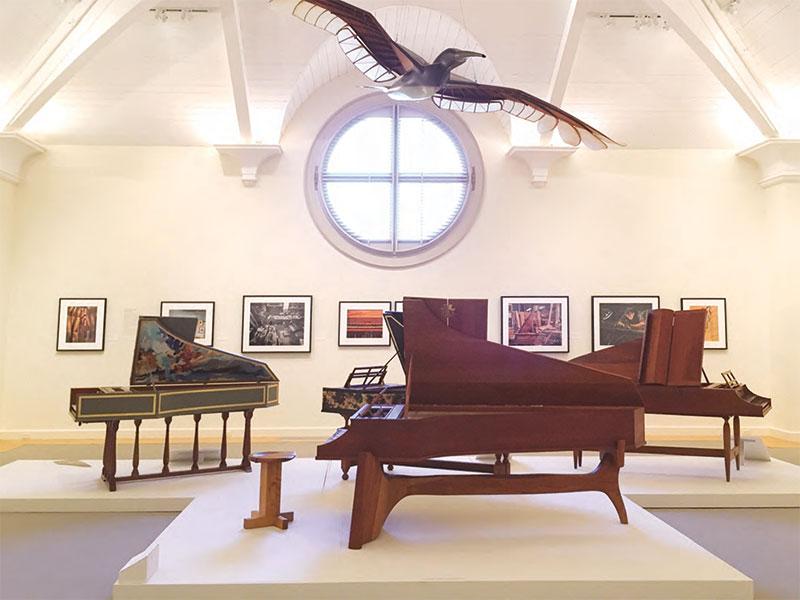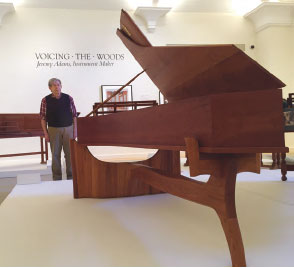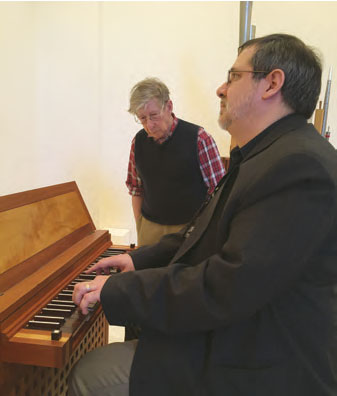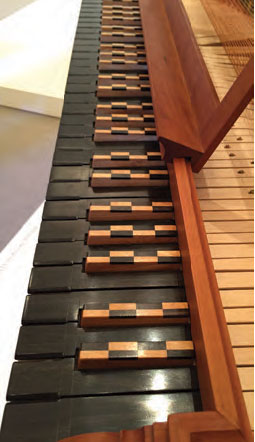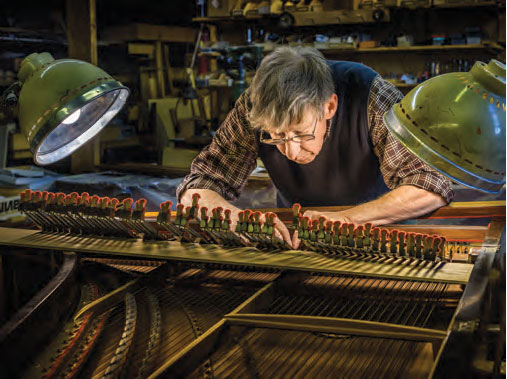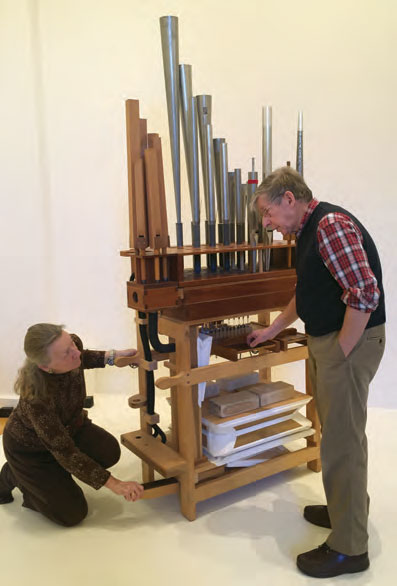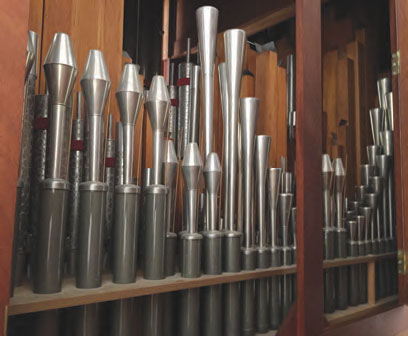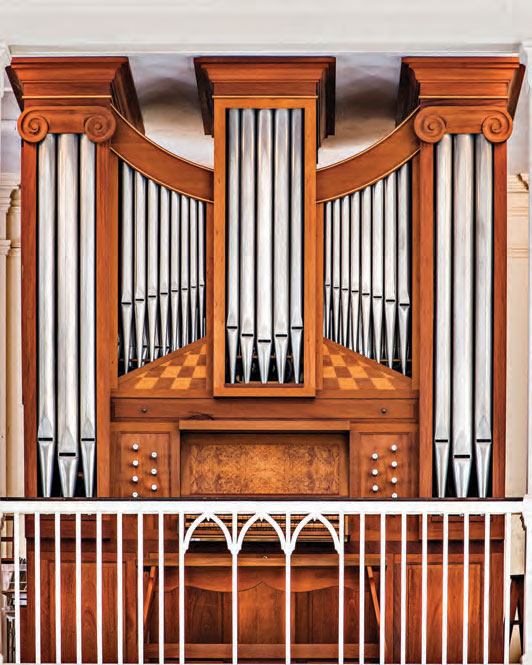Every time I visit Gloucester, Massachusetts, I feel a touch of magic. What creates that magic? For me, it is the coalescence of “culture” and the most down-to-earth humanity. Nowhere in Gloucester is this coalescence more potent than at the Cape Ann Museum.
Gloucester is the fishing city par excellence. It is so famous that, when I visited a tiny fishing village in Sicily in 1995, most of the inhabitants had heard of Boston, but all of them had heard of Gloucester. At least one of these inhabitants was illiterate. I know this because, not wanting me to discover this fact, he made it a point for me to see him looking at a newspaper . . . which he was holding upside down. What this same man knew about the sea exceeded the knowledge of someone with a degree in marine biology from an accredited university.
That is the whole point. There is always this chasm between the uneducated peasants who discovered and developed the arts and sciences, and the educated folks who pontificate on these same arts and sciences, pretending to “understand” them. Rich men in bow ties gawking at the creations of impoverished illiterates. To be honest, I feel uncomfortable in some museums (and, for that matter, in some concert halls).
The Cape Ann Museum felt entirely different to me. I walked in and was drawn to the Lane Gallery. My eyes were hypnotized by dozens of paintings by the great luminist (and Gloucester native) Fitz Henry Lane (1804–1865). You sense Lane’s exquisite painting technique. You sense the rough seas that he depicts. And you feel no line of demarcation between the two. I could write at length of the maritime exhibits throughout the museum, all of which boast both refinement and humanity with no enmity between them. I cannot overemphasize the impression that this museum made upon me.
There could not have been a better setting for the astonishing exhibit, “Voicing the Woods: Jeremy Adams, Instrument Maker.”
Some context is needed. Let’s dispense with tact for a moment. Since the day in 1933 that Walter Holtkamp Sr. added that bright Rückpositiv to that lush E.M. Skinner at the Cleveland Museum of Art—the Pearl Harbor event of the American organ world—there has never been a full truce between the “Baroque people” and the “Romantic people.” It didn’t “feel right” to hear Bach on the average electropneumatic instrument. And it also didn’t “feel right” to have a Schnitger copy in a non-reverberant American Protestant church. None of it felt right.
Throughout the fads, throughout the extremes, a quiet maverick has endured. Soft-spoken. Humorous. Brilliant. Simultaneously educated and earthy. Jeremy Adams builds instruments that bridge gaps. The gap between peasant and scholar. The gap between old and new.
Instruments that, like Gloucester itself, have a touch of magic.
I won’t even attempt to describe the experience of entering this exhibit, 1,500 square feet (!) filled with instruments, each one of which is a work of art. And what does that mean? “Work of art” is something that is created when 100% of your brain is thinking about that something, and 0% of your brain is thinking about money or bills or insurance or politics or diplomacy or responsibility or anything other than that something.
Oddly enough—or appropriately enough—the first “instrument” I saw was a silent keyboard, the perfect demonstration of Adams’s simultaneous artistry and humor. I had read that some famous pianists in the 19th century used to take dummy pianos with them on tours. But this device must certainly be the first and only example of a “dummy harpsichord.” Built in 1980, it boasts rosewood naturals, rosewood and boxwood skunk-tail sharps, and a mahogany case and stand. Half-jokingly— or maybe totally seriously— Adams said, “One can hear the music within. Including the mistakes!” But since the keyboard is weighted exactly as a harpsichord, Adams explained, the player is even more aware of the attack and release without being “distracted” by the sound. “In addition,” boasted Adams, “it is always in tune!”
Next I saw a clavichord, built in 1999 (after Manuel Carmo, 1796). Ebony naturals. Satinwood and ebony checkered sharps. Oiled cherry case. As a clavichord builder, Adams has no equals and few rivals. The woodwork was so stunning that I almost didn’t want to play it. Yet it was so thoroughly musical that I could barely peel myself away to get to the next instrument.
I don’t like to mix music and religion. I don’t want to be a “church musician”—I want to be a “musician’s musician.” Yet as I ran my fingers over the four contrasting harpsichords in the exhibit—each different, each exquisite—I thought of the phrase in John’s Gospel, “In my Father’s house are many mansions.” Maybe it “seemed like heaven” because my training was in piano and organ, thus the harpsichord is exotic to me. But it was more than that. The above-mentioned fads and extremes . . . the decades of bickering, even within the early instrument movement . . . builder A daring to “make changes” to a historic instrument . . . builder B who isn’t satisfied unless he washes his shirt with the same detergent that the original builder used . . . builder C who dares to be “eclectic” and strives to emulate historical models and satisfy modern tastes, both at the same time—thus disappointing everybody. But there’s a quality in Adams’s instruments that is so musically compelling that my brain forgets about all that pingpong. Yes, there is the historic quality. Yes, there is the consideration for modern needs. But he succeeds in bridging the two because he’s not aiming for either one. He’s aiming for a sound. As he put it to me, “Harpsichords already have a lot of consonants. I’m looking to create vowels.”
The first harpsichord I played is the epitome of an instrument bridging gaps—an often-played harpsichord that is both stable and beautiful. The double-manual instrument was built in 1975 (after Andreas Ruckers, 1640). Ivory naturals (which for a brief moment almost seemed “out of place” among the exhibit’s orgy of gorgeous wood), rosewood sharps. Solid basswood case, brush-painted with gold-leaf bands. Oiled cherry turned stand. As Adams explained, “The builder is creating something new in his own time. That’s what Ruckers or Blanchet or any other great maker was doing. Those fellows had gotten really good at mechanical integrity and beautiful sound. That’s what I want from them.” Adams is particularly proud of the “modern” lid painting by Sarah Brown from Mattapoisett, Mass. “I didn’t want any cupids,” he said.
Next was a singlemanual from 1981— also after Andreas Ruckers, 1640, but completely different in character. Ebony naturals, bone-topped ebony sharps. Solid basswood case, gold leaf, brush painted. Oiled cherry trestle stand.
When a great artist creates something just for himself, without trying to please a client, the result can be mesmerizing. So it was with the centerpiece of the exhibit: a brand-new double-manual, recently completed but in the works for some time. In between other projects, when he had extra time, Adams would do some work on it. A lover of the French sound, he long had in his mind’s ear the tone of a 1730 Blanchet in the music room of the late Charles Paine Fisher. I can’t think of any aspect of this instrument that isn’t exceptional. Cocobolo naturals. Bone-topped cocobolo sharps. The wildest stopknobs I ever saw— made from cow’s toenails, which decades ago a friend gave Adams as a gift, daring him to find an artistic use for them! The large oiled cherry carved stand was inspired by ocean waves, harmonizing with the seafaring spirit of the museum itself. And the sound? Would it be cliché to say that it “sounded like an organ”? I could have spent hours on it.
If that instrument reminded me of the Philadelphia Orchestra under Ormandy, the handsome 1990 double (after Ruckers) instead conjured Jussi Björling. Rosewood naturals, skunk-tail bone and rosewood sharps. Solid cherry case, inlaid satinwood lid band. Maple burl key-well. Oiled, turned cherry stand.
While well known for his achievements in harpsichord and clavichord building, Adams’s accomplishments in organbuilding have gone largely unrecognized. After playing the heavenly harpsichords, my curiosity was fully piqued; I was anxious to try the 2000 chamber organ. I fear no contradiction in stating that it is the most impressive and most musical one-rank organ that I have ever played.
In 1993, Estey’s Opus 2645 (1927) was discarded by St. Anthony by the Sea in Gloucester. Adams rescued the rank of pine Stopped Diapason pipes. He transformed them (with some adroit mitering) and created a chamber organ that bridges all the aforementioned gaps. The instrument seems old yet new, urbane yet warmly human. It was classy enough to be in a museum, and down-to-earth enough that you actually wanted to play music on it. The tone was so vocal that after a few minutes of neo-Baroque noodling my fingers unconsciously segued into Brahms.
The best thing about the instrument is that Adams simply built it his way, to his own personal taste. He wanted something bigger and warmer, so that’s what he built. (“Instead of having a continuo organ that two people can carry, I made one that four people can carry.”) The resonance is unimpeded by the gridwork case. And rather than have the sound directed back at the player, he placed the rollerboard in such a way as to direct the sound into the audience. And because all of his instruments have to have that little touch of magic, there is no “on” button or lever. The keyboard retracts into the organ. Pulling it out turns on the blower.
Adams’s organ background, like the man himself, is both fascinating and humorous. Jeremy began piano lessons at age five, practicing on his parents’ small melodeon. At age nine came art lessons, for which the boy also showed considerable aptitude. (Decades later, he himself would decorate some of his harpsichord soundboards.) At the Longy School, Jeremy studied piano under Roland Sturgis and accompanied many singers and string players. (“That’s where I learned about lieder and chansons, vocal styles that I want to hear when I am voicing.”) At age 16, his parents decided he should take up the organ (or, alternatively, a large accordion!) to “calm him down.” (Adams’s version of the story: “At age 16, I started organ lessons—so I could relax.”) Adams had the fortune of studying organ and theory with the Longy’s director, Melville Smith (1898–1962). A protégé of Boulanger, Smith was one of the most influential organists of his time and served as consultant for many Holtkamp instruments (including the two 1955 organs at MIT—considered important “Baroque” instruments until the 1958 arrival of Biggs’s Flentrop at Harvard changed the ballgame).
Adams had many anecdotes about Smith. “I learned more from assisting Melville at the organ than I did from any other music teacher that I had . . . I turned pages for him twice at Busch-Reisinger. The first time, I was one of two assistants. He must have liked my work, because the second time, I was the only assistant. There was one spot in a de Grigny piece where he wanted to play a few notes on another manual to bring out the cantus firmus in an inner voice. He liked the effect, but the stretch was too big. So he had me play the notes he couldn’t reach. ‘There,’ he said, ‘Now Biggs will wonder how I did it!’”
While studying with Smith, Jeremy had become the organist for a children’s chorus, directed by his Longy classmate Rob Loud, at the Stone Church in Lincoln, Mass., whose Hutchings organ was his first acquaintance with a tracker. “It had a very heavy action. But I could feel the music under my fingers in a way that I hadn’t with the electropneumatic instruments that I knew.”
After a six-year apprenticeship with harpsichord builder William Dowd, Adams worked for several years at C.B. Fisk, taking part in the building of such notable organs as Harvard Memorial Church (1967, the first 20th-century four-manual tracker built in America) and Old West Church (1971). His first venture into metal pipemaking was precipitated by a missing tenor F# in a stop on the Fisk instrument at St. Stephen’s in Boston’s North End. Adams was keen to make the pipe. “It was the very first metal pipe ever made in the Fisk shop. I’m not sure I’d want to see it again, now that I actually know how to solder!” Adams would later become a specialist in reed construction and voicing, skills he learned from a beloved mentor, the late Roland Dumas—whom he always refers to as Master Pipemaker Roland Dumas, never simply Roland Dumas. In his honor, the Oboe in the Annisquam organ, built and donated by Dumas, is called Chanson de Roland.
Besides the bold reeds in several Fisk instruments, Adams has built and/or voiced reed ranks in some high-profile instruments— including the Cromorne at the Mormon Tabernacle, the Trompette-enchamade at St. Paul’s School (Concord, N.H.), and the completion of the Solo Tuba of the renowned 1897 Hutchings at the Basilica (Mission Church) in Boston. By 1997, the Mission Tuba had only 18 extant pipes when Henri Lahaise & Son was contracted to reinstall it. Adams made the missing pipes, and Dick Lahaise, a longtime friend and colleague (of both Adams and of this writer), said that he couldn’t tell the difference between Adams’s new pipes and Hutchings’s originals.
In 1969 Adams established his own waterfront workshop in East Gloucester, later moving to a decommissioned Seventh Day Adventist Church in Danvers. Over 40 instruments have emerged from the Adams atelier, along with many reparations and rescues of other builders’ harpsichords and organs.
In 1987, Adams built a new organ for the Village Church in Annisquam, a neighborhood in Gloucester. The contract there led to a contract of marriage to organist Kathleen (Hallman) Adams. In 1995 Adams built a similar organ for the Roxbury Latin School in Boston.
In Japan, Adams has built instruments for the Episcopal Cathedral in Sapporo and the Fukkatu Kyokai Church in Kyoto as well as a voicing machine for Yamaha. He has rebuilt three English church organs in Barbados and restored two historic organs in Edgartown, Martha’s Vineyard (the 1881 Wm. Williams at St. Andrew’s Episcopal, and the 1903 Hook and Hastings at the Federated Church).
After experiencing the one stop of the chamber organ, I was dying to try the 13 stops of the Annisquam instrument, a highly interesting and highly musical one, worthy enough to have been played and recorded by artists of the caliber of Rudolf Innig, Yuko Hayashi, and the late Joseph Payne.
As I first started to play it, the tone seemed to have a 19th-century character (appropriate for this 1830s New England church). However, the more I played, the more I started to detect something more Silbermann-ish. The case has a clever trompe l’oeil: two panels of inlaid checkerboard (satinwood and mahogany), giving the small case the illusion of depth.
I have a devious trait: when I go to organs of this type, I purposely try to make them run out of wind. I was not able to do so on this organ—a fact that pleased its builder! “I’m not a fan of wiggly wind,” he said. “It took 2⅜ inches to make it sing. I want that vocal quality in the pipes.” Adams designed the remarkable double-rise bellows in the style of Cavaillé-Coll. The bass octave is winded separately with a generously sized conduit. “That’s a Cavaillé-Coll trick,” said Adams.
I left Gloucester feeling like I had been touched twice by magic, once by Adams’s work, and once by the city itself. What sparked this magic, I wondered? I could conclude only that it was the contact between the two worlds, the “classy” and the “peasanty,” the top hats and the work boots cohabiting in utter harmony.
“Voicing the Woods” is on view through February 26. For more details, see Capeannmuseum.org.
(Photo L.C.)
(Photo: L.C.)
Adams and the author at the chamber organ (2000). (Photo: Kathleen Adams)
Clavichord (1999). (Photo: L.C.)
Adams works on a Pleyel harpsichord. (Photo©Paul Cary Goldberg)
Jeremy and Kathleen Adams at the Demonstration Organ Chest (1989), also part of the exhibit. (Photo: L.C.)
The “Chanson de Roland,” named in honor of Roland Dumas, who built and donated it to the Annisquam Village Church organ (1987). It is a French-style Oboe, with an Hautbois treble and Basson bass. (Photo: L.C.)
The Annisquam organ, with checkerboard trompe l’oeil. (Photo © Paul Cary Goldberg)

